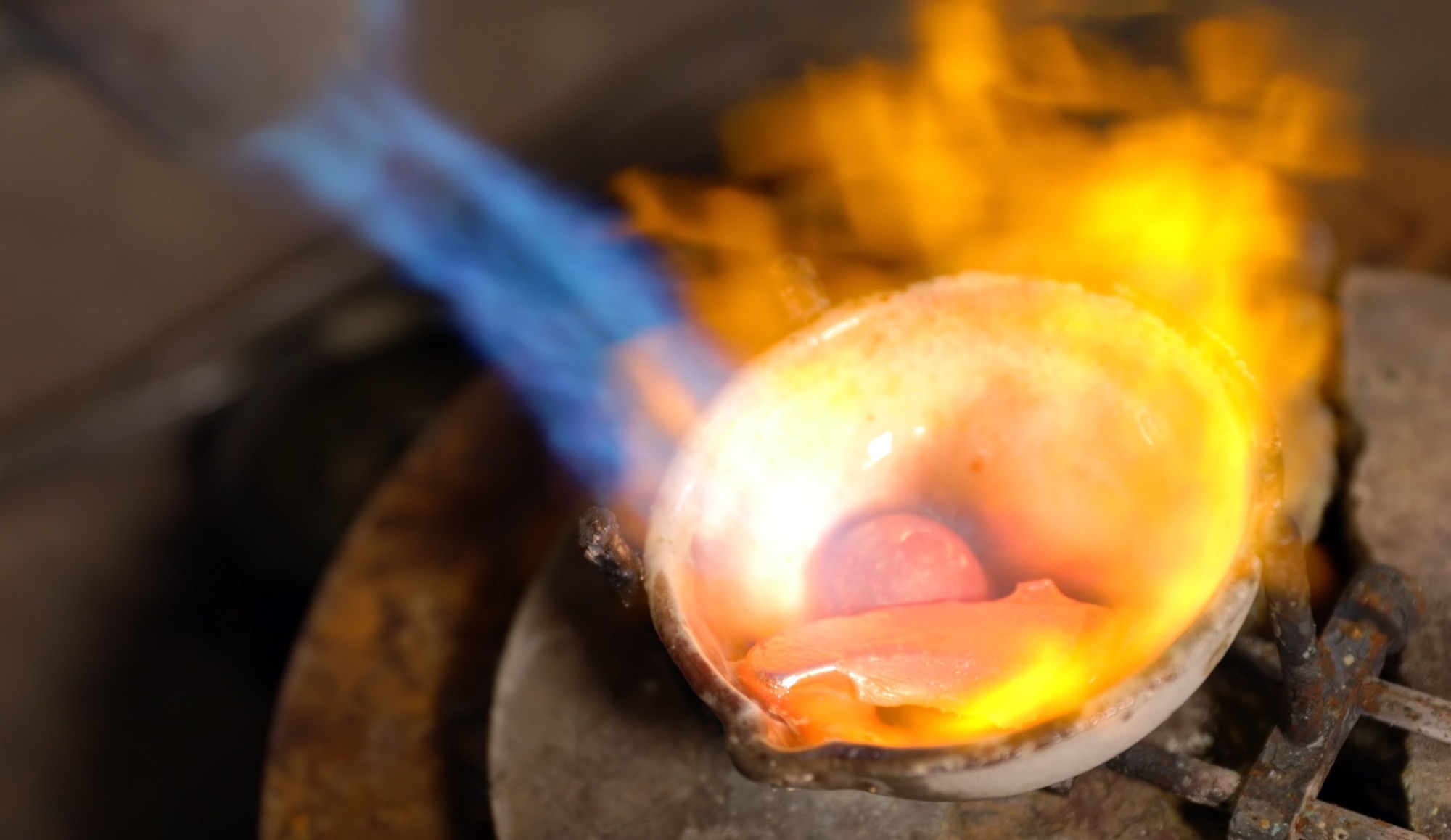Gold has been pushed to 14 times its melting point without liquefying, defying predictions about thermodynamic limits and revealing new insights into extreme material stability.

Image Credit: /Shutterstock.com
In a study published in Nature, researchers have used ultrafast laser heating and high-resolution inelastic X-ray scattering to explore the extreme limits of gold's structural stability.
The 'entropy catastrophe' is a critical point where the entropy of superheated crystals is equal to that of their liquid counterparts. Previously, it has been impossible to experimentally investigate due to a variety of instability events occurring at lower temperatures.
By using ultrafast laser heating and high-resolution inelastic X-ray scattering, the research team has been able to explore further than ever before.
They have found that gold retains its crystalline structure even at temperatures of nearly 19,000 K (over 14 times the metal's standard melting point), calling into question the previously assumed 'entropy catastrophe' threshold.
Testing Superheating With Ultrafast Lasers
The team aimed to experimentally test the long-theorized upper boundary of superheating, which predicts that a solid should become thermodynamically unstable once it approaches about three times its melting point (Tm).
Advances in short-pulse laser technology have enabled scientists to reach heating rates exceeding 1014 K/s, bypassing the slower, destabilising processes that typically lead to melting.
Previous experiments have superheated gold to between 1.4 and 2.1 Tm. Theoretical models suggest this was near the limit, beyond which entropy in the solid would surpass that of the liquid and violate thermodynamic principles.
However, a major limitation in earlier work was the reliance on indirect methods to estimate ion temperatures. This study overcame that by using inelastic X-ray scattering to directly measure ion velocity distributions, offering model-independent access to lattice temperatures.
Extreme Heating Without Loss Of Structure
Gold films just 50 nanometres thick were irradiated with ultrafast laser pulses, achieving heating rates above 1015 K/s. At 3.5 × 1015 K/s, samples reached 13,800 ± 3,200 K, around 10 Tm. At 6 × 1015 K/s, the temperature peaked at 19,000 ± 4,000 K, approximately 14 Tm.
In both cases, the samples remained crystalline for more than two picoseconds, far longer than the time typically needed for melting to occur.
The researchers monitored the lattice structure of the films using wide-angle X-ray diffraction. The presence of (200) and (111) Debye-Scherrer rings indicated long-range order.
These peaks decayed gradually as atoms vibrated more intensely, with the (200) peak fading faster than the (111). But, neither disappeared within the three picosecond observation window, indicating that the material had not melted.
Surprisingly, the Bragg peak positions remained fixed, indicating no significant expansion or ablation. This stability contradicts expectations from entropy models, which predict rapid breakdown once the entropy of the solid phase exceeds that of the liquid.
How the Team Measured It
The researchers used a multiphoton expansion approach to precisely model the scattering during heating. They fitted Voigt profiles to experimental data via maximum likelihood estimation.
Electron thermal properties were also modelled to confirm uniform heating. Under experimental conditions, electron thermal conductivity was estimated to be between 3,000 and 5,000 W/(Km), and heat capacity around 0.3-0.5 J/(gK), leading to a thermal diffusion time across the 50 nm sample of about 0.5 picoseconds. These conditions supported the assumption of near-instantaneous, uniform electron heating across the sample.
Laser fluence was adjusted using an iris before the final focusing optics, allowing the researchers to control and isolate energy delivery. Only scattered X-ray photons corresponding to known fluence bands were included in the temperature analysis. Temperature and structural measurements were taken simultaneously using Dioptas software to process X-ray diffraction patterns.
Download your PDF copy now!
Rethinking the Entropy Catastrophe
The study's most striking result is that the system avoided the long-assumed entropy crossover point, where the solid's entropy overtakes the liquid's. This threshold has long been considered a thermodynamic ceiling for solids under heat.
But by heating fast enough to suppress expansion, the researchers showed that gold can remain stable well beyond this point. The entropy of the solid phase stayed below that of the liquid at all temperatures achieved. This suggests the entropy catastrophe may not be a true upper bound, at least not under ultrafast heating conditions.
Because the heat capacity of the solid under these extremes is governed by universal constants (and the liquid phase is still poorly characterised), the point at which entropy curves cross remains uncertain. Deviations in heat capacity for non-equilibrium systems and thin films may also shift the entropy balance.
No Hard Limit for Superheating?
The findings show that, if the heating is fast enough, the predicted limit for superheating can be exceeded by a wide margin. It may not exist at all. The crystalline structure of gold withstood temperatures that conventional thermodynamics say should be impossible for a solid.
These implications extend beyond gold. Understanding material stability under ultrafast, high-energy conditions could inform the design of more resilient materials for extreme environments, such as those encountered in nuclear fusion, astrophysical research, or ultrafast electronics.
Journal Reference
White, T. G. et al. (2025). Superheating gold beyond the predicted entropy catastrophe threshold. Nature, 643(8073), 950–954. DOI: 10.1038/s41586-025-09253-y. https://www.nature.com/articles/s41586-025-09253-y
Disclaimer: The views expressed here are those of the author expressed in their private capacity and do not necessarily represent the views of AZoM.com Limited T/A AZoNetwork the owner and operator of this website. This disclaimer forms part of the Terms and conditions of use of this website.